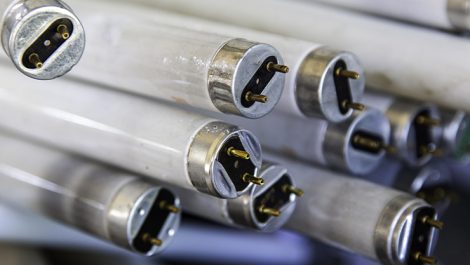We’ve come across a rising number of compostable alternatives to plastic of late. The ideas are heading in the right direction, but there needs to be a lot more thought put into how these materials are handled in the waste stream.
Plastics were for decades the answer to pretty much every product and process question, from billiard balls to packaging. Polymers are even added to packaged products such as shampoos and conditioners. Until lately little thought was given to the sustainability of plastic’s disposal and recycling. Environmentalists are shouting louder about plastic waste management and the damage it does to wildlife, and potentially to humans as microscopic plastic particles accumulate in food systems. We’re late to the problem but there are massive efforts underway to mitigate the various damages associated with plastics pollution. From the European Union’s ban on single-use plastics, through to the MacArthur Foundation’s New Plastics Economy initiative, the big guns are on it.
But so are the not-so-big guns such as SKU Driver, a small sign and display graphics company in the UK. This firm has developed a compostable plastic for display work based on organic feedstocks. It is completely biodegradable and according to its developers, Composta Base uses 67% less energy to produce than plastics. The company also has an app to report saved emissions and how much plastic use has been avoided. A ‘Cowgorithm’ (yes really) presents the data so that they are easy to understand, for instance the average cow emits 2.8 tonnes of CO2 per year.
Plastic exhibition panels are, along with most exhibition materials, very wasteful especially if they are of the single-use variety. Composta Base is a 100% recyclable bio plastic that can also be formed into printed 3D shapes. The prints can be deinked and recycled up to ten times without degradation, supporting the circular economy.
This brings us to the flaw in the whole matter of bio plastics and their recycling. Composting in landfill works, but for bio plastics to be recycled in conventional plastics reprocessing systems requires a bigger shift. We have already seven categories of plastics, some of which can be recycled and some of which cannot. Consumers are basically useless at segregating them, even when they are aware of the category, which is not often. As we have seen with paper recycling, different printing methods require different deinking chemistries and processes. So it will be with plastics recycling processes that mix conventional polymers with equivalents made from plant starch – the latter could be considered as pollutants in the conventional plastics recycling process.
The paper industry has demonstrated its sustained opposition to ISO standards that raise recycling and deinkability awareness on this basis. If we can avoid the same fiasco for plastic recycling and sustainable disposal, that would be wisdom indeed. Companies such as SKU Driver with Composta Base are leading the way along with the big names. Hopefully they can all work together to develop real solutions to what we already know will be a very real problem.
– Laurel Brunner
This article was produced by the Verdigris Project, an industry initiative intended to raise awareness of print’s positive environmental impact. This weekly commentary helps printing companies keep up to date with environmental standards, and how environmentally friendly business management can help improve their bottom lines. Verdigris is supported by the following companies: Agfa Graphics, EFI, Fespa, HP, Kodak, Kornit, Ricoh, Spindrift, Splash PR, Unity Publishing and Xeikon.





